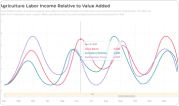- Economic
- Agriculture
- Construction
- Finance
- Labor
- Employment to Population Ratio
- Female Employment to Population Ratio
- Female Labor Force Participation
- Female Unemployment Rate
- Labor Force Participation Rate
- Male Employment to Population Ratio
- Male Labor Force Participation Rate
- Male Unemployment Rate
- Not in Education, Emoloyment, or Training
- Unemployment Rate
- Working Student
- Macroeconomics
- Manufacturing
- Mining
- Services
- Trade and Hospitality
- Transportation and Communication
- Utilities
- Environmental
- Social
- Semua Data
Interval
Kustom Waktu
Satuan
Interval
Kustom Waktu
Dari
Sampai
Satuan
Number of Banks
Number of Banks
NA
<
0
0.25
0.5
1
1.5
2
2.5
3
3.5
>
5
Number of Banks
| Provinsi | Jlh bank_per10000 |
|---|
Sumber Data
Number of Banks
Sumber Data
:
Village Potential (Podes), Statistics Indonesia, Processed by LPEM FEB UI
Terakhir diperbaharui
:
31 Desember 2019
The tabulation reports the total number of actively operating bank offices per 10,000 population, from 1996 to 2019. We account for different varieties of banks in the tabulation, including private banks, rural banks, and government banks. The bank office data are taken from the Village Potential (Podes) data, while the population data are taken from each year's Susenas data.
Unduh
Grafik


Number of Banks
Satuan :
Interval : undefinedly -
NA
<
0
0.25
0.5
1
1.5
2
2.5
3
3.5
>
5
Number of Banks
Satuan :
Interval : Tahunan


